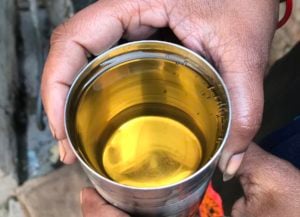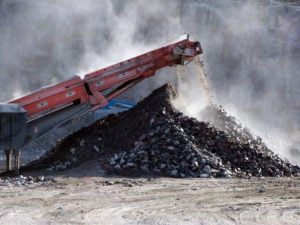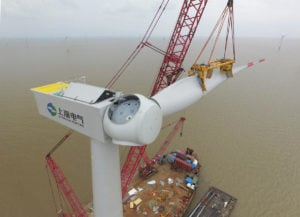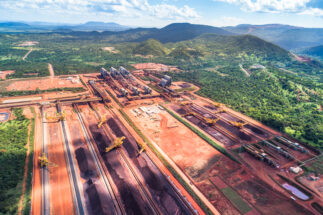Lakhan feels like he has won a lottery today. The 45-year-old scrap buyer has purchased a dead car battery from a home in New Delhi for INR 50 (USD 0.67). One of the thousands of kabadiwallas who roam the streets of India’s capital seeking old newspapers, empty bottles and just about anything with value in the recycling market, Lakhan knows he will be able to sell the battery for INR 3,760 (USD 50.30) – an important part of his average monthly income of around INR 30,000 (USD 400).
The dead battery is now ready to be part of an intricate recycling chain. But there is a problem: informal battery recycling is one of the most toxic processes in the world.
1.2 million tonnes
Quantity of batteries that entered India’s recycling industry in 2017-18, according to Toxics Link
The lead acid battery, invented by French physicist Gaston Planté in 1859, continues to be the primary means of storing energy in the automobile, telecommunications and energy industries, among many others. About 86% of lead consumed globally is used to make lead acid batteries, most of which is recycled. Recently, the drive towards electrification through electric vehicles and solar energy has propelled an exponential rise in battery production. The global lead acid battery market is projected to reach USD 52.5 billion by 2024 from an estimated USD 41.6 billion in 2019.
This demand has created a large and thriving informal economy in South Asia around the disposal of lead acid batteries. Between 2013-14 and 2016-17, official data reveals a 1,000% rise in tonnes of batteries sold in India. In 2017-18, 1.2 million tonnes of batteries entered India’s recycling industry, 90% of which was processed informally, according to a study by Toxics Link, a New Delhi-based non-profit that campaigns against industrial and other pollution.
Illegal lead smelters evade authorities
After being sold by a Lakhan, the car battery will be taken to a smelter outside New Delhi. Here, its lead will be removed and sold on to factories.
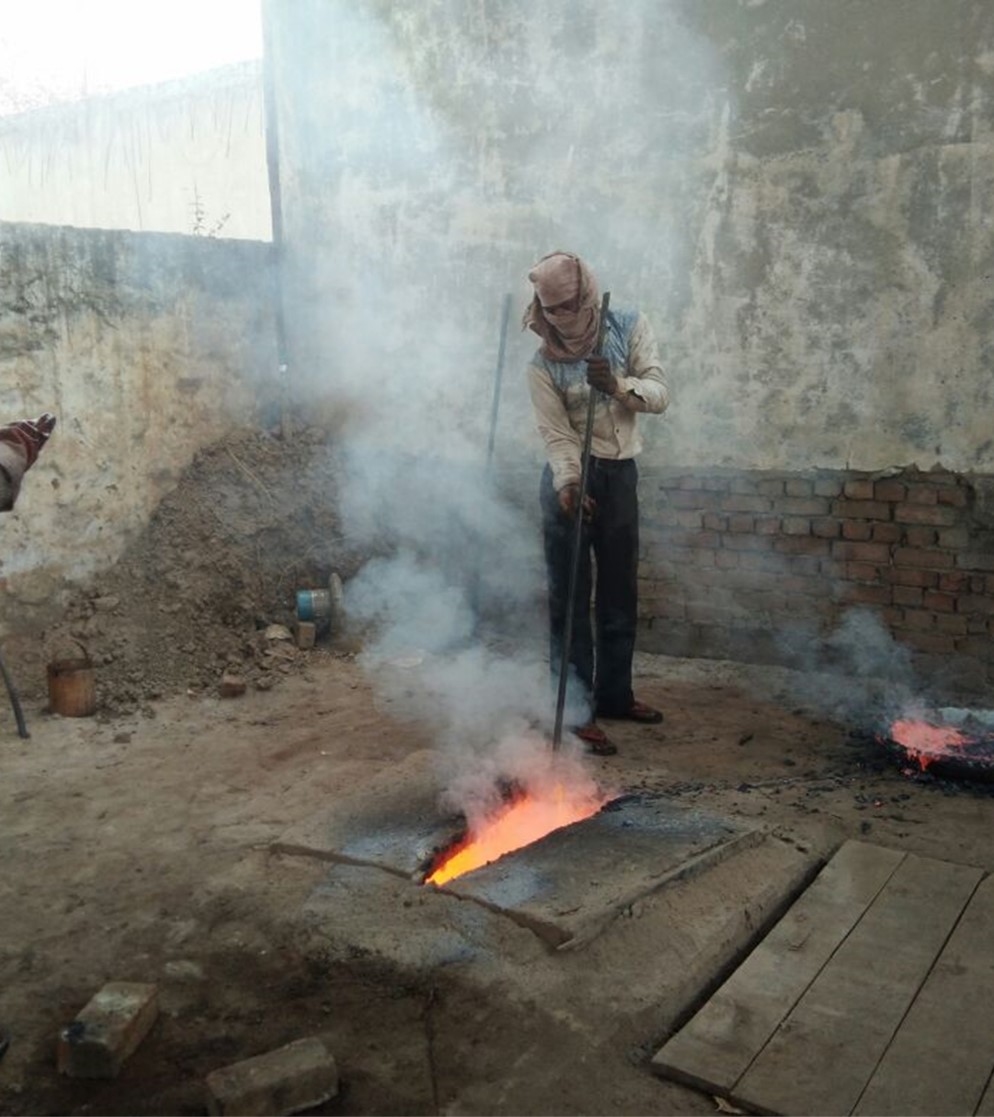
Murad Nagar, a small town in Uttar Pradesh near New Delhi, is one of many such battery-recycling hubs. When The Third Pole visits, the ground is covered with remnants of abandoned illegal lead-smelting units. Green plots of cultivated land are surrounded by small factories that have been destroyed by the authorities, acid-poisoned soil, discarded battery casings and dug-out earth.
“These units were destroyed two years back. We are grateful since it was difficult for us to breathe,” says a resident.
But that did not bring an end to local peoples’ problems. Vinod Dhangar, another resident, says: “Summer nights are usually filled with a nauseating smell.” According to him, the problem persists as illegal establishments merely move to where it is easier to hide their operations. “They are temporary and are basically hand-to-mouth businesses.”
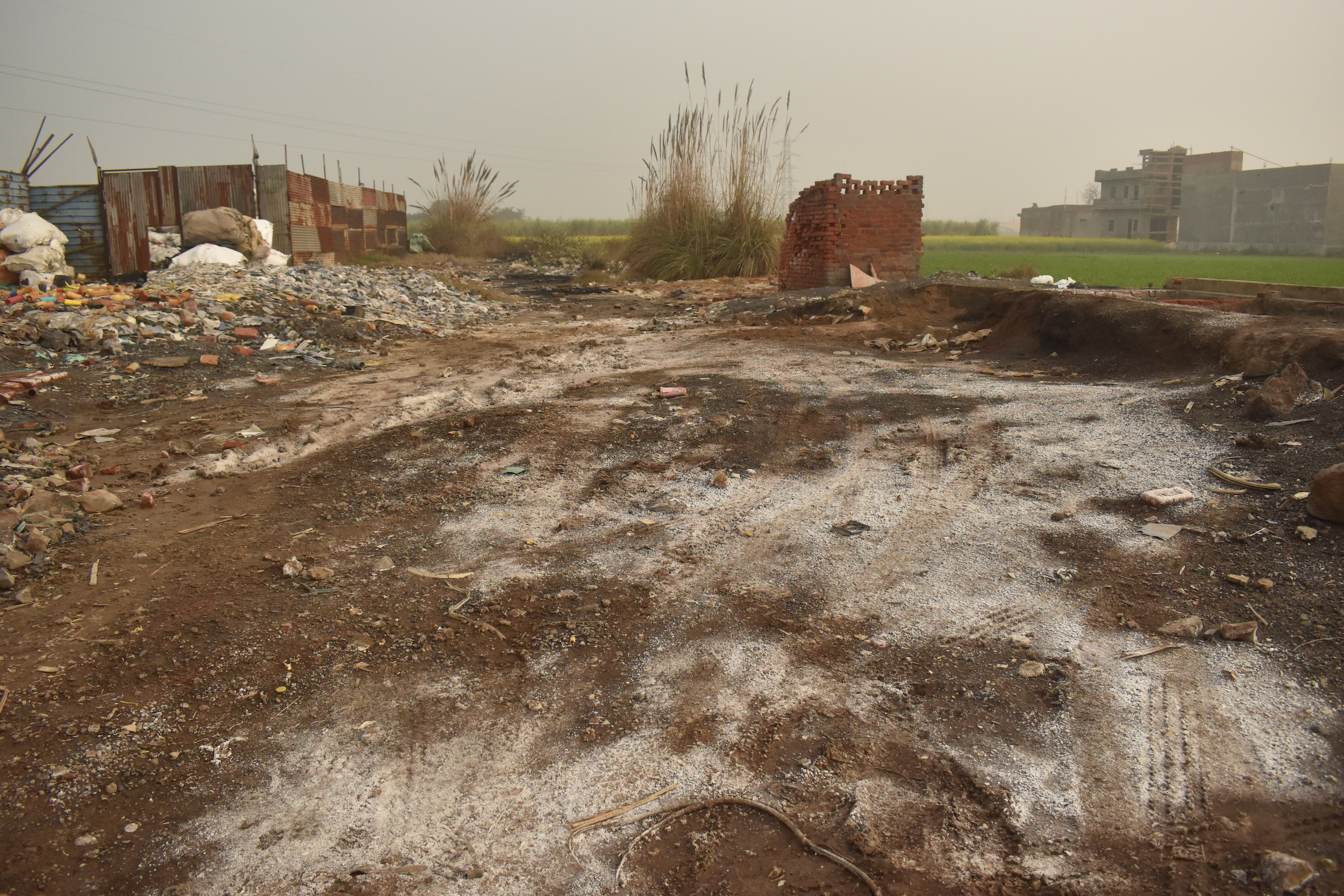
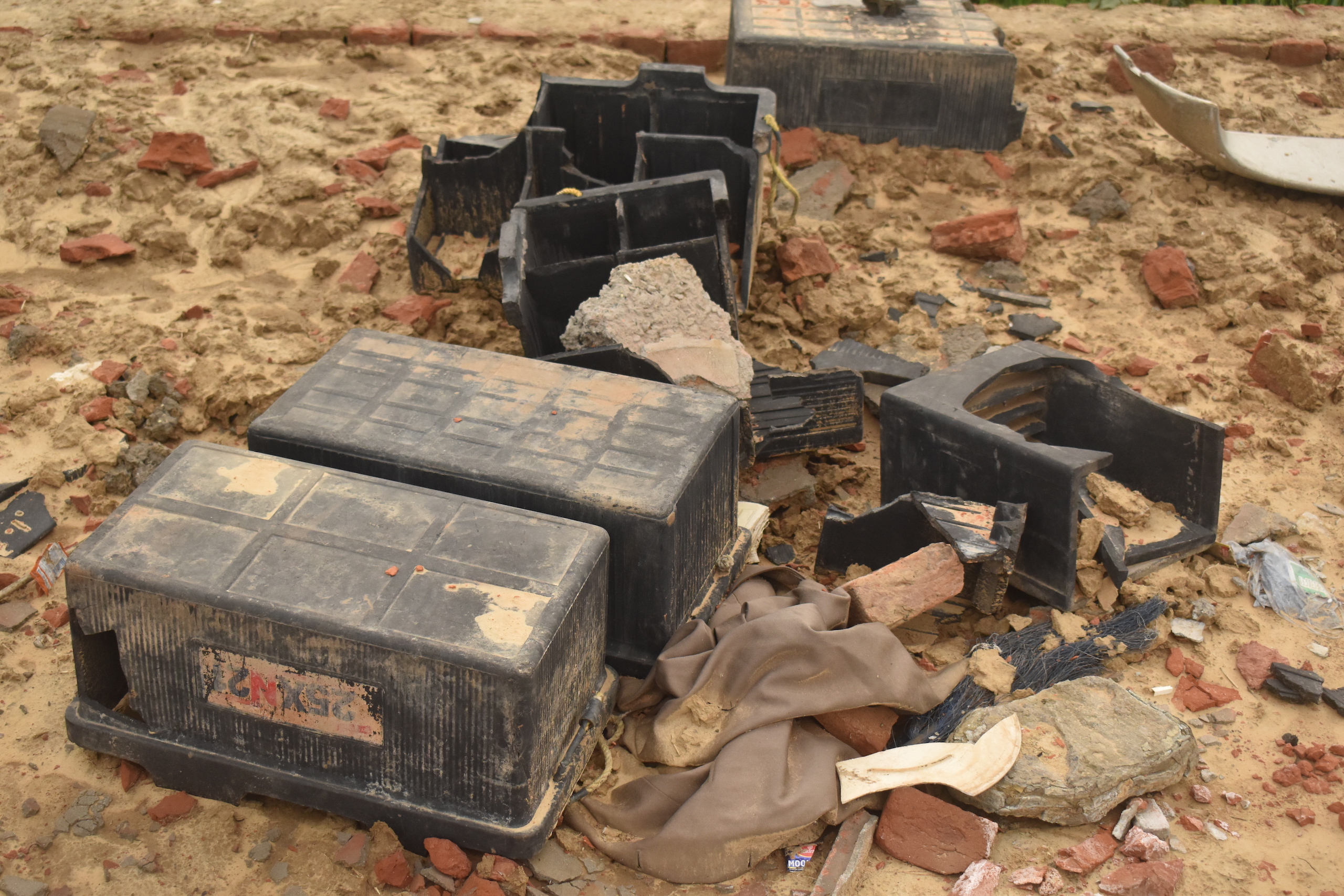
Because illegal units do not have any pollution-control equipment, the smelting process releases noxious fumes and wastewater directly into the local area. They spring up almost as fast as they are closed down. Speaking on condition of anonymity, a local officer of the Uttar Pradesh Pollution Control Board says that while many lead-smelting businesses are becoming formal, it is difficult to keep a check on all illegal activities. “If we receive a complaint, usually [we disconnect] services such as electricity and water supply to the establishment,” he adds.
Residents usually protest the setting up of illegal recycling plants, says Vijaypal Baghel, founder of Paryawaran Sachetak Samiti, an environmental NGO based out of Ghaziabad city, near Murad Nagar. “These units do not follow any pollution [control] norms, with operations being halted temporarily in case of punitive action,” he says.
Such sites remain polluted long after they are abandoned. “High concentrations of lead have been found even years after a site’s removal,” says Priti Mahesh, chief programme coordinator of Toxics Link.
The rules and lack of implementation
The Batteries (Handling and Management) Rules 2001, amended to improve implementation in 2010, is the primary regulation in India on the use and disposal of lead acid batteries. It makes manufacturers, assemblers and dealers responsible for ensuring the collection of used batteries from buyers and sending them to registered recyclers.
However, a 2017-18 status review report of the rules published by the government’s own Central Pollution Control Board observed that “state pollution boards had been grossly inadequate in reporting inventories of appropriate stakeholders and compliance reports”.
Manufacturing with lead as well as recovery of lead from waste is prohibited in India’s capital by the Delhi Master Plan 2021. According to a report by Toxics Link on impact of lead battery recycling, this has led to illegal recycling units shifting to nearby towns such as Murad Nagar.
Why is lead so dangerous?
Lead accumulates in the body over time. Exposure to the heavy metal causes a range of health problems, but particularly damages the brain and central nervous systems. According to a report by UNICEF and non-profit Pure Earth, lead poisoning is responsible for 900,000 deaths annually, which amounts to 1.5% of global deaths. The World Health Organization (WHO) says there is no safe level of lead in our blood.
Despite this, the metal is widely used in batteries, paints and many other industrial applications. It also makes its way into the spices we eat and the cosmetics we use. Recycling of lead acid batteries is one of the major contributors to lead exposure in middle- and low-income countries.

The informal nature of battery recycling in South Asia means there is no authoritative data on the scale and quantities involved. But morbidity data indicates the scale of the problem. According to the Global Alliance on Health and Pollution (GAHP), lead pollution is estimated to cause around 233,000 premature deaths in India annually, while the estimated numbers for Bangladesh and Nepal are around 30,800 and 3,760 respectively.
Lead poisoning does not only kill people – it causes illnesses and affects our ability to have a normal life. Children’s development is irreversibly affected, with potentially severe behavioural imapcts.
According to the WHO, 21.7 million years of healthy lives (disability-adjusted life years, or DALYs) are lost worldwide due to long-term effects of lead poisoning. The highest numbers are in low- and middle-income countries.
Same tale all over South Asia
In Bangladesh, about 118,000 tonnes of lead acid batteries is discarded every year, according to the International Lead Association (ILA). But there are only two government-registered recyclers and four battery manufacturing companies that formally recycle used batteries in the country, data from Pure Earth reveals.
The same situation is found all over India. For example, Jharkhand, one of India’s poorest states, has two registered recyclers out of 672 operating units, according to the Central Pollution Control Board. “A lead acid battery, if recycled properly, usually yields 60% of its original value,” says Shiv Shankar, a registered recycler operating out of Kokar Industrial Area in Ranchi, the capital of Jharkhand. He claims that previously his workers would complain of headaches and breathlessness. But, he says, since he changed to a new air filtration system and mandated the constant use of masks and gloves, no instance of lead poisoning has been reported in his factory.
“The lead battery recycling industry gets a lot of bad reputation,” Shankar sighs.
Factories like Shankar’s are a rarity in Pakistan. “Informal recycling units around lead acid batteries have usually been observed in the urban periphery,” Azher Uddin Khan, chief executive of Cleaner Production Institute in Lahore, tells The Third Pole, adding that “no rules around a strong framework of buy-back policies has yet been formed in Pakistan”. According to him, legal action against informal entrepreneurs is pointless, as the problem must be curbed at the source. “Manufacturing companies must be responsible for their inventories.”
Khan says that the use of lead acid batteries has increased significantly in recent years. This has been driven by electricity outages, which force people to use inverters that run on lead acid batteries, and increasing vehicle ownership.
Will people stop using batteries? I am just trying to do my jobLakhan, scrap buyer
Nepal has the same problem as its South Asian neighbours. “Used lead batteries are often transported for dismantling to the Terai region in southern Nepal,” says Jyoti Giri, a professor at Tribhuvan University in Kathmandu. According to Giri, such units are usually found near rivers for the ease of draining acid. She says recycling activities are not being carried out “seriously” and there are glaring lacunae in norms and protective gear. “Lead makes its way into the bloodstream by mere touch,” Giri warns.
Asked about this toxic trail, Lakhan, one of the many kabadiwallas who start this process, replies: “Will people stop using batteries? I am just trying to do my job.”
Across the international border in Lahore, Khan says: “We still have a long way to go in terms of awareness around recycling of toxic materials.”


